Free area of the Republic of China
| Free area of the Republic of China 中華民國自由地區 Zhōnghuá Mínguó Zìyóu Dìqū | |
|---|---|
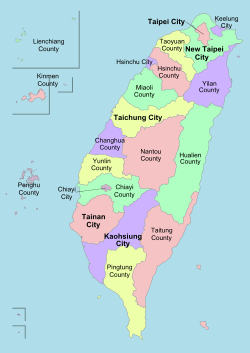 Taiwan Area of the Republic of China | |
| Largest cities | |
| Languages | |
| Ethnic groups | |
| Demonym | |
| Area | |
• Total | 36,193 km2 (13,974 sq mi) |
| Population | |
• 2018 census | 23,681,968 |
• Density | 650/km2 (1,683.5/sq mi) |
| Currency |
|
| Time zone | UTC+8 (National Standard Time) |
| Driving side | right |
| Calling code | +886< |
| ISO 3166 code | TW |
| Internet TLD | |
|
Free area of the Republic of China | |||||||||||||||||||||||||||||||
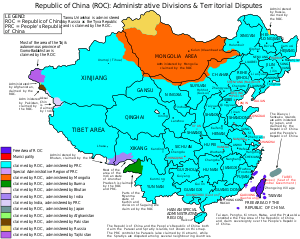 Map showing the free area of the Republic of China (in dark blue) and the territories the ROC government claimed while the Kuomintang ruled the whole China. | |||||||||||||||||||||||||||||||
| Traditional Chinese | 中華民國自由地區 | ||||||||||||||||||||||||||||||
|---|---|---|---|---|---|---|---|---|---|---|---|---|---|---|---|---|---|---|---|---|---|---|---|---|---|---|---|---|---|---|---|
| Simplified Chinese | 中华民国自由地区 | ||||||||||||||||||||||||||||||
| |||||||||||||||||||||||||||||||
| Taiwan area | |||||||||||||||||||||||||||||||
| Traditional Chinese | 臺灣地區 | ||||||||||||||||||||||||||||||
| Simplified Chinese | 台湾地区 | ||||||||||||||||||||||||||||||
| |||||||||||||||||||||||||||||||
| Tai-Peng-Kin-Ma | |||||||||||||||||||||||||||||||
| Traditional Chinese | 台澎金馬 | ||||||||||||||||||||||||||||||
| Simplified Chinese | 台澎金马 | ||||||||||||||||||||||||||||||
| |||||||||||||||||||||||||||||||
The Free area of the Republic of China is a term used by the government of the Republic of China (ROC) to refer to the territories under its actual control.[1] The area under the definition consists of the island groups of Taiwan, Penghu, Kinmen, Matsu and some minor islands. This term is used in the "Additional Articles to the Constitution of the Republic of China". As the island of Taiwan is the main component of the whole area, it is therefore also referred to as the "Taiwan Area of the Republic of China" or simply the "Taiwan Area". The term "Tai-Peng-Kin-Ma" is also essentially equivalent except that it only refers to the four main islands of the region - Taiwan, Penghu, Kinmen and Matsu, to the exclusion of the South China Sea area possessions.[2]
The term is opposed to "mainland area",[3] which is practically viewed synonymous to mainland China.[4]
Background
The term "free area" or "Free China" was used during the Second Sino-Japanese War (1937–45) to describe the territories under the control of the Kuomintang (KMT) government in Chongqing (at the time romanised as Chungking), as opposed to the parts of China under Japanese occupation, including Nanjing (Nanking) the capital of the Republic of China until the Japanese invasion in 1937.
The Japanese occupation ended with the imperial surrender in 1945, but the term "Free China" was soon to acquire a new meaning in the context of the early Cold War. Following the CCP victory in the Chinese Civil War in 1949, the newly inaugurated People's Republic of China solidified its control of mainland China, while the Kuomintang government retreated to Taiwan and selected Taipei to serve as the provisional capital of the Republic of China. Mainland China was officially considered to be in a state of "Temporary Communist Rebellion" (this "Period of Communist Rebellion" would be officially terminated by the ROC government in 1991), and furthermore all territories still under Nationalist administration were said to constitute the "Free Area" of China.
Prior to the Battle of Dachen Archipelago in 1955, the Free Area also encompassed a group of islands off Zhejiang, up to then part of the ROC province of Chekiang. The islands have since been administered exclusively by the PRC.
Nomenclature
Various names used to describe the geopolitical area include:
| Full | Abbreviation | Note | |
|---|---|---|---|
| 1 | Free Area of the Republic of China | The Free Area | "Free" refers to the area that is not under control by the Communist Party of China. This term is used by the Additional Articles of the Constitution. |
| 自由地區; Zìyóu dìqū | |||
| 2 | Taiwan Area | Refers to the general area surrounding the island of Taiwan. This term is used by various laws and regulations that governing cross-strait relations. | |
| 臺灣地區; Táiwān dìqū | |||
| 3 | Taiwan-Penghu-Kinmen-Matsu Area | Tai-Peng-Kin-Ma Area | Refers to the four main archipelagos under the government's jurisdiction. |
| 臺澎金馬地區; Tái-Pēng-Jīn-Mǎ dìqū | |||
| 4 | Taiwan-Fukien region | Tai-Min region | Refers to the two provinces under actual administration. Namely, Taiwan Province (encompassing the islands of Taiwan and Penghu) and a small part of Fukien Province (encompassing Kinmen and Matsu islands). Mǐn is the traditional abbreviation for Fukien. |
| 臺閩地區; Tái-Mǐn dìqū | |||
Legal use
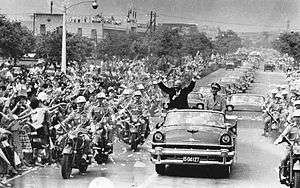
The term "free area of the Republic of China" has persisted to the present day in the ROC legislation. The Additional Articles of the Constitution of the Republic of China delegates numerous rights to exercise the sovereignty of the state, including that of electing the President and Legislature, to citizens residing in the "free area of the Republic of China." This term was first used in the Constitution with the promulgation of the first set of amendments to the Constitution in 1991 and has been retained in the most recent revision passed in 2005.
The need to use the term "free area" in the Constitution arose out of the discrepancy between the notion that the Republic of China was the sole legitimate government of China and the pressures of the popular sovereignty movement. In the 1980s and 1990s, there were demands, particularly by the Tangwai movement and other groups opposed to one-party authoritarian KMT rule, to restructure the ROC government, long dominated by mainlanders, to be more representative of the Taiwanese people it governed. For example, until 1991, members of the National Assembly and Legislative Yuan elected in 1948 to serve mainland constituencies remained in their posts indefinitely and the President of the Republic of China was to be elected by this same "ten thousand year parliament" (萬年國會) dominated by aging KMT members. However, more conservative politicians, while acquiescing to the need for increased democracy, feared that constitutional changes granting localized sovereignty would jeopardize the ROC government's claims as the legitimate Chinese government and thereby promote Taiwan independence.
According to the Constitution, promulgated in 1947 before the fall of mainland China to the Communists, the national borders of the Republic of China could only be changed through a vote by the National Assembly (amendments passed in 2005 transferred this power to the electorate through the method of referendum). In the absence of such constitutional changes, the Republic of China's official borders were to be regarded as all of mainland China in addition to the territories it controlled. (Until the mid-2000s, maps published in Taiwan depicted mainland provincial and national boundaries as they were in 1949, disregarding changes by the Communist administration post-1949.)
While the 1991 revisions of the Constitution granted the sovereignty rights to the Taiwanese people, it did not explicitly name Taiwan and instead used the term "free area" to maintain the notion that the Republic of China encompassed more than Taiwan. In ordinary legislation, the term "Taiwan Area" is usually used, especially in contexts of trade and exchange. In contrast to the "free area" is the "mainland area", which the Act Governing Relations between the People of the Taiwan Area and the Mainland Area defines as "the territory of the Republic of China outside the Taiwan Area." However, on more practical grounds, the "mainland area" refers simply to mainland China.
In addition, there are two other Acts defining other "areas": the "Hong Kong Area" and the "Macau Area". The hand-over of these former European colonies to the People's Republic of China necessitated laws governing the relations of the Taiwan Area with them. The Acts are worded in a manner to avoid discussing whether the Republic of China claims sovereignty over Hong Kong and Macau.
See also
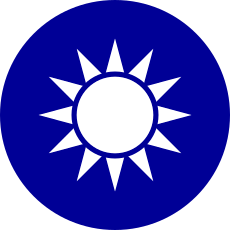 |
|---|
| This article is part of a series on the politics and government of the Republic of China |
|
Leadership |
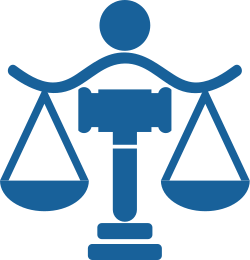
|
|
Other branches |
|
Related topics |
|
|
References
- ↑ "The Additional Articles of the Constitution of the Republic of China Archived 2006-07-12 at the Wayback Machine.." Republic of China. Retrieved on 7 April 2009.
- ↑ https://books.google.com/books?id=vFy3J2PyEAoC&pg=PA91
- ↑ Chen Wei-han (8 June 2016). "NPP to push constitutional reforms". Taipei Times. Taipei.
An amendment made to the Constitution in 1991 “to meet the requisites prior to national unification” recognizes the “Chinese mainland area” as opposed to the “free area,” and both areas make up the Republic of China.
- ↑ Sara L. Friedman (2015). Exceptional States: Chinese Immigrants and Taiwanese Sovereignty. Oakland, California: University of California Press. p. 10. ISBN 0520961560.
The Act's use of the spatial language of "area" was a direct reference to the postwar ROC Constitution, which had created two classes of Chinese based on politically differentiated, territorial criteria: those of the "free area," which included Taiwan and the scattered smaller islands under post-1949 ROC control, and those of the "mainland area," who presumably were not free because they lived under Communist rule.
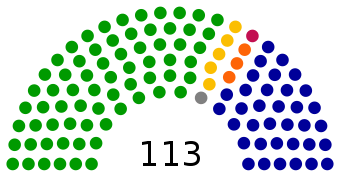
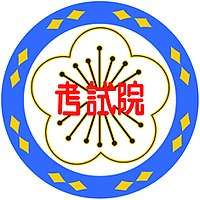

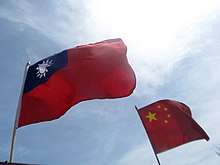
.svg.png)